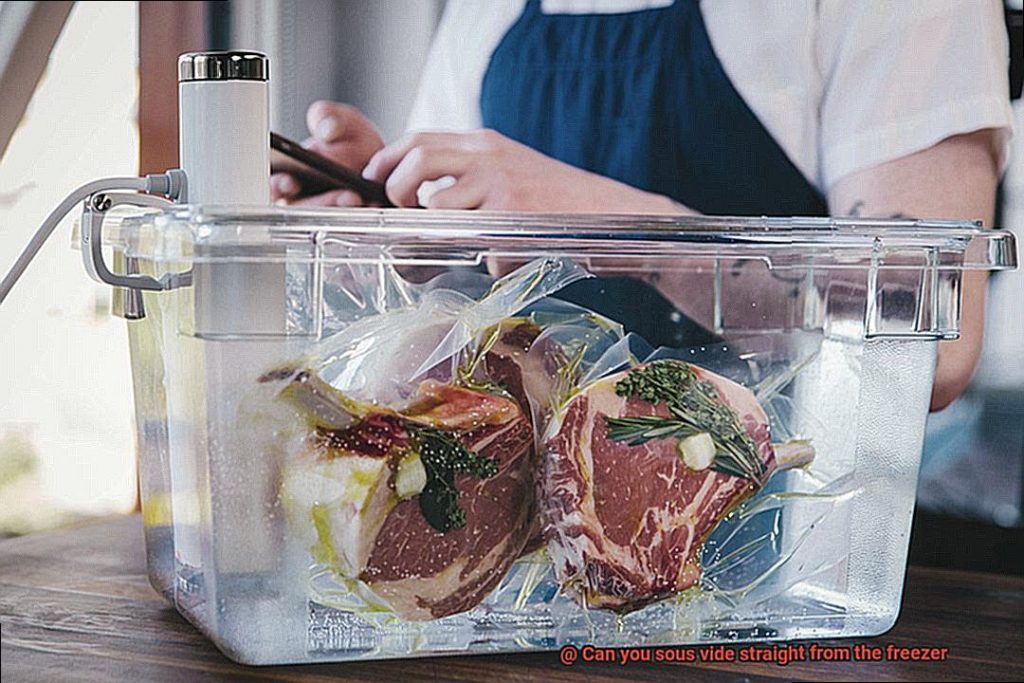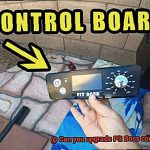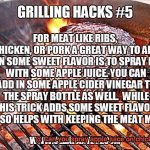Have you ever rummaged through your freezer and found a long-forgotten bag of frozen veggies, questioning whether they’re still good to eat? Or maybe you’ve planned a delicious sous vide meal, only to realize that the meat is still frozen solid. Don’t worry, because I have some exciting news for you – it’s possible to sous vide straight from the freezer.
Sous vide cooking has gained popularity in recent years due to its ability to produce consistently delectable and perfectly cooked meals. However, one of its main requirements is defrosting food before cooking. But what if you forgot or don’t have time to thaw your food out?
In this blog post, we’ll delve into the concept of sous vide cooking straight from the freezer and answer common questions about this technique. Can you achieve the same taste and quality as defrosted food? How do you properly prepare frozen food for sous vide cooking? What are the pros and cons of this method?
Whether you’re a seasoned sous vide pro or just curious about this innovative cooking technique, keep reading. We’ve got all the juicy details on how to make mouth-watering meals straight from your freezer.
Contents
Benefits of Sous Vide Cooking
Sous vide cooking is a technique that has taken the culinary world by storm, and for good reason. This method involves sealing food in a vacuum-sealed bag and cooking it in a precisely controlled water bath. The benefits of sous vide cooking are plentiful, making it a must-try for anyone looking to elevate their cooking game.
Precision is perhaps the most significant advantage of sous vide cooking. Traditional cooking methods can be unpredictable, resulting in overcooked or dry dishes. With sous vide, the precise temperature ensures consistent and perfectly cooked meals every time. This level of precision also makes it possible to cook delicate dishes like fish or eggs with ease.
Sous vide cooking also provides convenience, making meal prep and planning a breeze. Once food is sealed in the bag, it can be stored in the refrigerator or freezer until you’re ready to cook it. This feature saves time and makes mealtime more efficient.
Large cuts of meat like roasts or briskets can be tricky to cook evenly, but sous vide takes away the guesswork. The temperature can be controlled throughout the entire cooking process, resulting in meat that’s tender, juicy, and full of flavor.
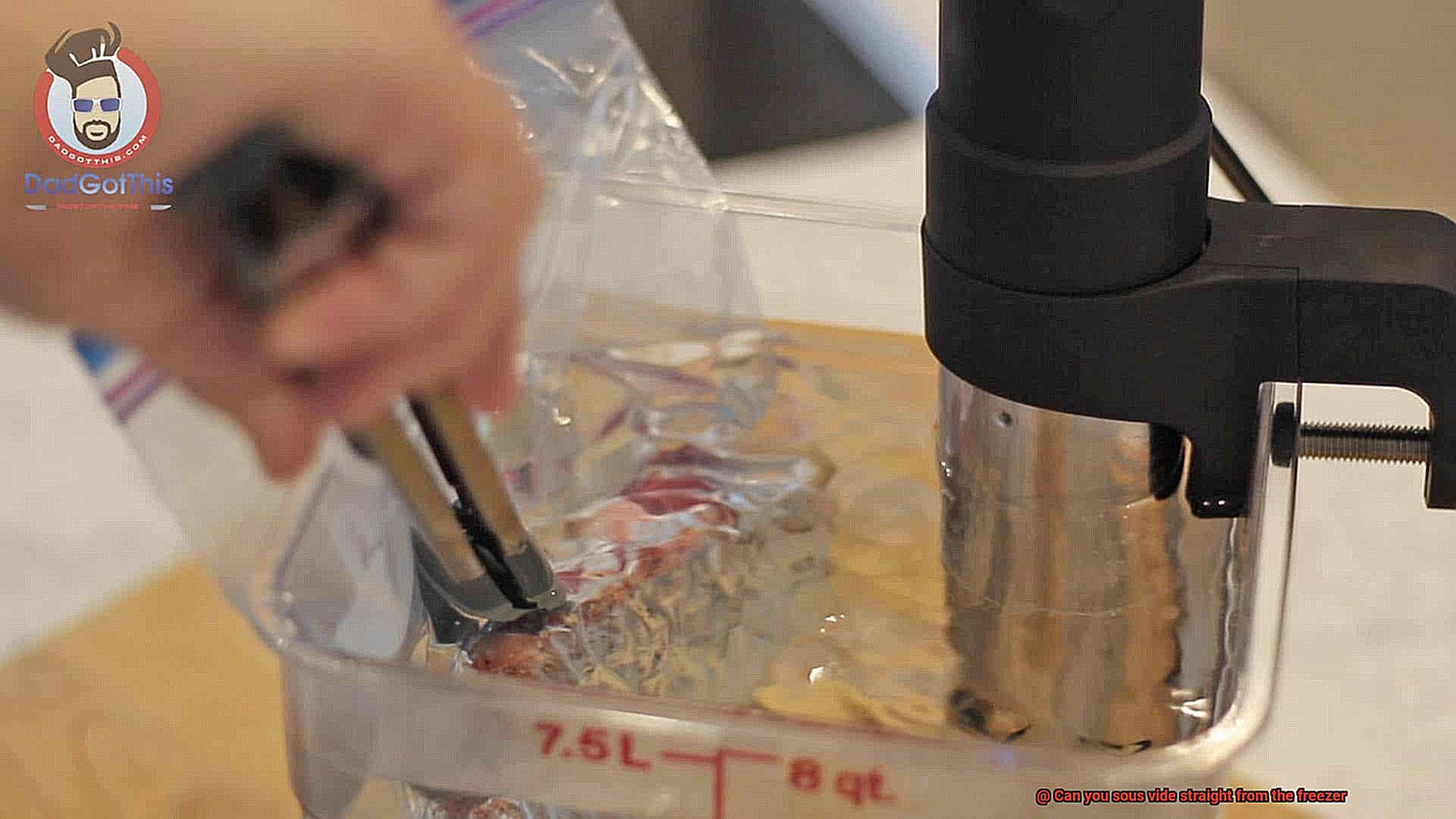
In addition to the many culinary benefits of sous vide cooking, it also helps reduce food waste. Because the food is cooked at a precise temperature, there’s less chance of overcooking or burning, which can lead to wasted food. The vacuum-sealed bags also help keep food fresh for longer periods, reducing spoilage and waste.
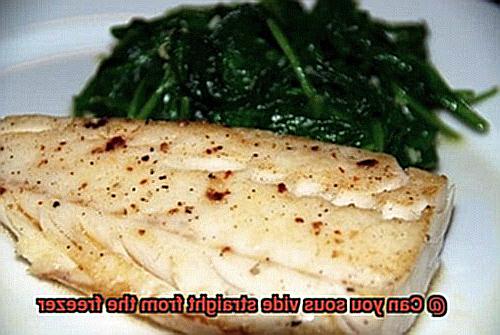
Can You Sous Vide Straight from the Freezer?
As a sous vide expert, I can confirm that it is possible, but there are some important things to keep in mind before you dive in.
Firstly, make sure to properly seal your food before placing it into the sous vide bath. This is essential to prevent water from seeping into the bag and ruining your meal. Trust me, nobody wants a waterlogged dish.
Another important consideration is allowing enough time for your food to thaw before cooking. While it’s true that sous viding frozen food is possible, it will take much longer to cook than if it were thawed first. Additionally, cooking frozen food can result in uneven cooking and an imperfect end result.
To ensure the best outcome when sous viding straight from the freezer, it’s recommended that you first thaw your food in the refrigerator or under cold water. Once your food is fully thawed, you can then proceed with the sous vide cooking process as normal. Don’t forget to adjust your cooking time accordingly.
Rest assured that sous vide cooking is one of the safest methods out there when it comes to food safety as long as you follow proper handling guidelines. So don’t worry about any potential risks.
Safety Tips for Handling Frozen Food
Sous vide cooking is a revolutionary way to cook food to perfection, and it’s even better when you can cook straight from the freezer. However, handling frozen food safely is crucial to avoid any potential health risks. Here are some safety tips to bear in mind when preparing to sous vide straight from the freezer.
Thawing your frozen food is an essential first step. It’s important to remember that you should never try to sous vide frozen food, as it can lead to uneven cooking and potential foodborne illness. Instead, thaw your food in the refrigerator overnight or use a cold water bath. Thawing the food properly ensures even cooking and reduces the risk of bacterial growth.
When storing frozen food, make sure it’s appropriately wrapped and sealed. Proper wrapping prevents freezer burn and contamination, while labeling the package with the date of freezing helps you keep track of how long it has been in the freezer.
Temperature control is critical for sous vide cooking. You must use a reliable thermometer to ensure that the food reaches a safe temperature. Additionally, you should keep an eye on the temperature of the water bath throughout the cooking process to ensure that it remains consistent.
Sanitation is also crucial when handling frozen food. Before handling frozen food, wash your hands thoroughly with soap and water. Also, make sure all surfaces and utensils are clean and sanitized before use. Using separate cutting boards and utensils for raw and cooked food will help prevent cross-contamination.
Preparing Food for Sous Vide from the Freezer
Cooking frozen food sous vide style may seem like magic, but it’s important to take a few extra steps to ensure that the food is safe to eat and cooks evenly. Fear not, my fellow cooking enthusiast, for I have gathered some expert tips on how to prepare food for sous vide from the freezer.
The first step is crucial: freeze the food properly in vacuum-sealed bags. This prevents freezer burn and helps retain flavor and texture. Once you’re ready to cook, allow the food enough time to thaw completely. You can do this by placing it in the fridge for several hours or overnight, or by using your sous vide machine itself to thaw the food in its water bath set at a low temperature (around 40°F).
Before cooking, inspect the food for any signs of damage or freezer burn. If there are any discolored or strange-textured areas, trim them away before proceeding. Don’t forget to season your food beforehand. Vacuum-sealed bags tend to mute flavors, so adding herbs, spices, or other flavorings to the bag will give your meal an extra boost of taste.
To summarize:
- Freeze food properly in vacuum-sealed bags
- Allow enough time for the food to thaw completely
- Inspect for any signs of damage or freezer burn and trim away
- Season your food beforehand with herbs, spices, or other flavorings
Adding Time When Cooking Frozen Food
With sous vide cooking, you can cook straight from the freezer. But before you dive in, it’s important to know how to add time when cooking frozen food.
Frozen food takes longer to reach the desired internal temperature compared to fresh or thawed food. This means that if you want perfectly cooked meals, you need to take into account the size and thickness of your frozen food and add additional cooking time accordingly. You can use a sous vide calculator to make sure you’re adding the correct amount of time for both fresh and frozen food.
But be careful not to overcook your food. Adding too much time can result in dry, unappetizing meals. It’s all about finding the right balance.
Before cooking, make sure to properly thaw your food. Thawing in the refrigerator overnight is the safest method, but if you’re short on time, you can use the sous vide method to thaw your frozen food. Simply set your sous vide machine to a temperature slightly below the desired cooking temperature and let your food thaw in the water bath.
To make sure your frozen food is in top condition, vacuum-seal it before freezing. This prevents freezer burn and allows for complete thawing before cooking. You can even add herbs and spices for an extra flavorful boost.
Foods Not Suitable for Sous Viding from the Freezer
Well, before you dive in headfirst, it’s important to note that not all foods are suitable for this cooking method. As an expert in this field, let me guide you through the dos and don’ts of sous viding from the freezer.
First and foremost, previously cooked foods should never be sous vided straight from the freezer. The cooling and freezing process can create a breeding ground for bacteria, which can lead to food poisoning if not properly handled. So, if it’s already been cooked, leave it out of the sous vide.
Next up, certain types of vegetables are not recommended for sous viding from the freezer. Leafy greens like lettuce and spinach tend to lose their texture and become mushy when cooked sous vide straight from the freezer. So, if you’re hoping for a crunchy salad, you won’t find it here. Other veggies with high water content like cucumbers or tomatoes can also become mushy and unappetizing when cooked from frozen.
Fatty meats like pork belly or duck breast may also pose a challenge when cooked straight from the freezer. The high fat content can result in uneven cooking and an unappetizing texture and flavor. However, this doesn’t mean that all meats are off-limits for sous viding from the freezer. Just be mindful of the fat content and choose leaner cuts whenever possible.
Tips for Perfectly Cooked Meals with Minimal Effort
Cooking a perfectly cooked meal with minimal effort is definitely possible, thanks to sous vide cooking. And the best part? You can even cook straight from the freezer. However, there are some tips and considerations to keep in mind for optimal results.
First and foremost, it’s important to ensure that your food is properly frozen before placing it in the water bath. Any ice crystals on the surface of the food can cause the bag to break or leak during the cooking process, which is not ideal. So, make sure you freeze your food properly.
Secondly, it’s crucial to add extra time to the cooking process since frozen food needs more time to reach the desired temperature than thawed food. A general rule of thumb is to add an extra hour of cooking time for every inch of thickness of your frozen food. This will ensure that your meal is cooked thoroughly and evenly.
Thirdly, make sure that your vacuum-sealed bags are completely sealed and free of any air pockets. Any air pockets may prevent the food from cooking evenly, especially when cooking from frozen.
Moreover, it’s best to thaw larger items such as roasts or whole chickens in the refrigerator prior to cooking sous vide. This will ensure that the food thaws evenly and reduces the risk of any bacteria growth.
Lastly, it’s recommended to season your frozen food after it has thawed. This will allow the seasoning to absorb into the food evenly without any interference from ice crystals. And when cooking from frozen, it may be necessary to adjust the water temperature and cook time based on the desired level of doneness.
VF_atZcnVqo” >
Conclusion
In conclusion, sous vide cooking has transformed the culinary landscape with its accuracy and convenience. And now, with the ability to cook straight from the freezer, it’s even more accessible for busy home cooks. But before you dive in, there are some crucial factors to keep in mind for optimal results and food safety.
Thawing frozen food correctly is key to avoid uneven cooking and potential health hazards. It’s also essential to ensure that your food is adequately sealed and free of any signs of damage or freezer burn before cooking. When cooking from frozen, adding extra time to the process is necessary, but be cautious not to overcook your food.
While not all foods are ideal for sous viding straight from the freezer, there are still plenty of delicious options available. From succulent meats to flavorful veggies, sous vide cooking offers a world of possibilities.
So why not give it a shot? With these expert tips and guidelines at your disposal, you can create mouth-watering meals with minimal effort and maximum flavor.

